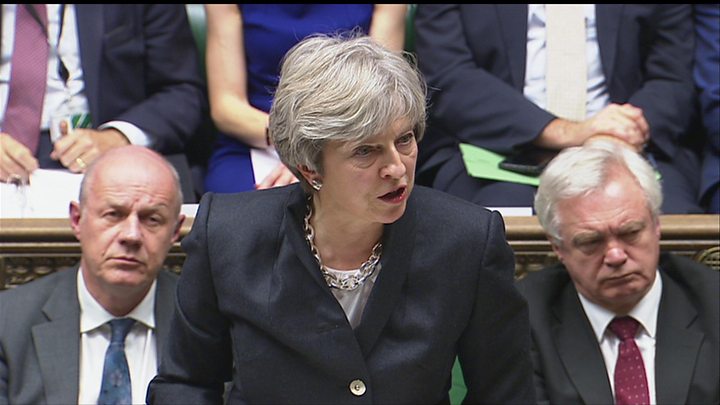The British House of Commons expects to vote today on how to proceed with the Brexit, and especially about how a no-deal Brexit can be prevented. Prime Minister Theresa May announced that she would support a proposal that will send her back to Brussels for new negotiations.
On January 15, a historic majority in the British parliament opposed the agreement on the division of property. The dramatic mood increases the risk that the British will thunder from the European Union on 29 March without mutual agreements and any transitional period.
The rejection of the agreement was a political humiliation for May, but the weakened prime minister has not announced any change of course since then. She mainly holds on to her deal.
After all, she has not given up hope yet that the House of Commons can still support the agreement, but according to Downing Street 10 it should be possible to change the so-called Irish backstop. Some parliamentarians, therefore, want to intervene and have submitted motions, among other things to take the initiative.
This backstop, a safety net, must ensure that the Brexit does not lead to the reintroduction of border controls between the British Northern Ireland and the EU Member State of Ireland.
Therefore, the United Kingdom would remain in a customs union with the European Union, and Northern Ireland should continue to follow part of the rules of the European single market until an alternative acceptable to both parties is found.
That safety net solution proved unpalatable on 15 January for the hard reciters in the conservative party of May, and the tolerant partner of its minority government, the unionist Northern Irish DUP.
Several amendments from that angle, with the most important thing from Graham Brady, therefore require that the backstop is abolished or modified. May came up with Brady’s proposal yesterday, but according to British media, she is causing a rift in her party between supporters and opponents.
If one of those amendments makes it, May will, in any case, have a new argument to ask the European negotiators for concessions. They repeat to the point that the divorce agreement can no longer be negotiated, but Finance Minister Philip Hammond and some other conservatives continue to hope that Europeans will be able to exercise some flexibility.
The pressure would, in any case, lie with the Europeans again if May can argue that there is a parliamentary majority to approve a divorce agreement with a modified backstop.
After all, Europeans also want an orderly Brexit, and a ‘no deal’ would be precisely what the Irish and the rest of the European Union try to avoid with the backstop: border controls.
But there are other options on the table in the House of Commons. An amendment by Yvette Cooper from opposition party Labor and Nick Boles from the Conservative Party is the best chance.
They want the parliament to consider a law that would force the government to postpone the date of the Brexit until the end of this year if May fails to convince the members of parliament by 26 February of the agreement. A vast majority in the House of Commons does not want a chaotic departure from the EU.
The motion is, if adopted, past, because the House of Commons has not appropriated government tasks for centuries, but sits on the premier’s chair.
It is the parliamentary speaker John Bercow who decides which amendments are being handled effectively today. None of those amendments binds the government directly, but May can hardly pretend that her nose bleeds when suddenly a majority shuffles through the ‘aye lobby’.
Cooper’s approach can legally bind the government, but only if the Labor Member of Parliament can also push through the law that would result from the approval of her amendment.
EU membership of the United Kingdom ends, as currently foreseen, in 59 days on 29 March.


